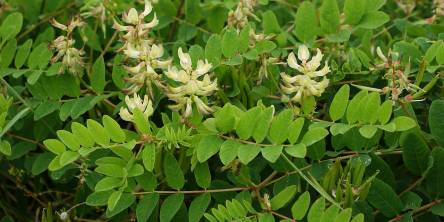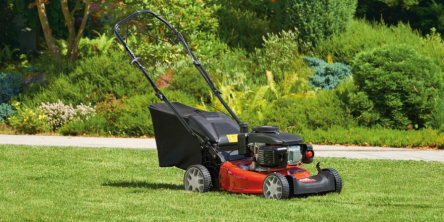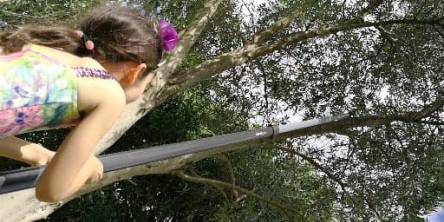How To Care For Succulents Indoors
With succulents as indoor plants, you subject your long-serving feeling of living to a refreshing change. Some score points with silhouettes similar to stone sculpture, others impress with a magnificent flower that rises above their prickly dress. They all have the fascinating ability to store water in the trunk, leaves, or roots. Regardless of whether you prefer cacti, milkweed plants, thick leaves, or other specimens of this plant family; In cultivation, succulents are always uniform. All fundamental details on care, watering, and fertilization are dealt with in the following in a practical manner.
Maintenance
As houseplants, succulents are an excellent choice for hobby gardeners who only have a very limited amount of time available for maintenance. Cacti, agaves, and other species of this wide variety of juicy plants do not take it easy once they dobe placed in the back. In the course of evolution, the drought specialists have converted various parts of plants into water reservoirs, from which they feed in times of need. However, this art should not be permanently put to the test in order not to overuse the natural beauties. If you want a vital, magnificent succulent plant, you should pay attention to the following factors of professional care.
Location
Grow a succulent that you hope will bloom nicely should it leave the room during the summer. Under the artificial or inadequate lighting conditions in interiors, the flower usually does not flower. This even applies to a seat on the south windowsill. If the houseplants move to the sun-drenched balcony in May, they will do their best here. A hardening phase is recommended in advance. In the first two weeks in the open air, the lush ornamental plants get used to the sun's rays in the partial shade. If they are exposed directly to the blazing sun, there is a risk of irreparable sunburn. This is how the ideal location should be:
- Sunny to full sun location
- A few species come in partial shade, such as haworthia or rush rod cacti
- Sensitive species such as echeveria should be protected from the rain
- Place in the room at the south window
- Do not expose to cold drafts
If temperatures drop below 15 degrees Celsius in autumn, succulents move into the house. Here you spend the cold season on the bright windowsill. A few species and varieties want to overwinter in a cool and dark place. These include classics such as Opuntia or Sedum.
Substrate
Although succulents are modest in the essential criteria, their substrate expectations should be taken seriously. Anyone who reaches for commercially available potting soil will be left behind within a short time. Such potting soil does not even come close to the conditions in the natural habitat of cacti and colleagues. As a result, the ascetics of the plant kingdom quickly brush their sails and die. Careful hobby gardeners, therefore, mix the substrate themselves. This is how it works:
- A mix of 75 percent cactus soil or pricking soil is ideal, plus pumice gravel, perlite, lava granules, and quartz sand
- Alternatively, equal parts of potting soil, ceramics, and sand
- Optionally, use a special substrate for succulents from specialist shops and add some sand
The more sensitive a succulent to wet
reacts, the higher the mineral content is measured. It is important to find a balance between good permeability and structural stability. The water should be kept in the substrate for a short time so that the roots can absorb it. On the other hand, waterlogging must not occur under any circumstances. You can easily test your own mix. To do this, take the substrate in your hand and press it together. After you open your hand, the mix should hold its shape for a short time and then fall apart.
To water
In their biorhythm, succulents differentiate between a moist, warm growth period and a dry, cool resting phase. A balanced water supply accounts for this change in the following ways:
- Water moderately from March to September
- Allow the surface of the substrate to dry before the next pour
- Gradually reduce the amount of irrigation water from the end of September
- Water only enough from October to February so that the plant does not dry out
- Use low-calcium rainwater or stale tap water
The talent for water storage is not to be equated with a predilection for the dried out substrate. During the main growth, experienced hobby gardeners water their succulents until the water runs out of the opening in the ground. The water collected in the saucer is emptied after 10 minutes at the latest.
Tip: delicate succulents with delicate shoots and leaves are watered from below. Place the planter in 5-10 cm high water until the substrate surface becomes moist. Then place it on two parallel wooden strips for 15 minutes so that excess water can runoff.
Fertilize
They made the leap among the most popular houseplants not least because succulents have a reputation as the incarnation of frugality. The modest demand for nutrient supply has contributed to this. However, you should not completely forego the use of fertilizer, because, in the narrowly limited substrate volume of the planter, any supplies are quickly used up. Even these storage artists do not want to gnaw on starvation. How to properly handle the component of care:
- From March to August, fertilize vigorous species and varieties every 14 days
- Fertilize succulents with slow growth once a month
- Do not give any additional nutrients from September
The specialist trade holds a broad
wide range of special preparations ready. You have the choice between liquid preparations and granules. It is important to note that fertilizer should never be applied to the dried substrate. In this case, unwanted burns will occur on the roots or shoots. If in doubt, first water the succulent plant with clear water before applying the fertilizer.
Repot
Take a look at the root ball of your succulents every year after the winter break in growth. If the planter is completely rooted, the roots even grow out of the opening in the ground, it is time to report. If there are mushy, soggy roots, cut them out with a sharp knife. Choose a slightly larger pot that has an opening at the bottom for water drainage. Proceed in these steps:
- Let the potted root ball dry for 3-4 hours
- Drainage made of potsherds or chippings over the water drain prevents waterlogging
- Fill in the recommended substrate halfway up and press on with your fist
- Make a hollow in it and insert the potted succulent plant
- Surrounded with the substrate as high as in the previous container and press down with the wood
- Species and varieties planted too deeply rot on the root neck
- Water a freshly repotted succulent after 3-4 days at the earliest
If you are dealing with a heavily thorny specimen, you should protect yourself. Grasp the plant with a cuff made of polystyrene sheets or several layers of newspaper. Gloves are compulsory if the succulents are poisonous.
Conclusion
Nature has an extensive repertoire of succulents ready, which are wonderfully suitable as indoor plants. In order to properly care for the survivors, a few criteria must be observed. Watering and fertilizing take into account the change between the summer growth phase and the winter rest period. Every 2 to 5 years after the winter break, repotting is on the agenda, provided the previous planter is completely rooted. However, all efforts to ensure appropriate care are only successful if the succulents thrive in a poor, well-drained substrate in a sunny location.
Similar Articles
In its natural habitat, Asia, the astragalus plant thrives. Huang qi (yellow leader), as it’s known in China, is regarded as one of the most significant plants in Chinese traditional medicine.
Raised beds need money and forethought. To avoid additional expenses and frustrations, you want to get things right the first time. If you're planning to build a raised bed garden or are just thinking about it, there are a few things to think about before you get started.
In the past, a lawn was mowed by hand. That was very tedious and also took a lot of time. Many gardeners and garden owners today indulge in luxury and buy a lawnmower.
A lawnmower is an extremely important piece of equipment for maintaining a garden. Find out which lawn mower is best for your yard and make maintaining your lawn a fun and exciting activity.
Dandelions are broadleaf perennials that you can get rid of only by using the best dandelion killer. But what type of herbicide? Let’s find out. Eliminating weeds such as dandelions is a very tough job. Because you have to make it a point to remove the root of the plant itself.
Trees are an essential part of any property, whether it’s a residential or commercial one. When properly cared for and maintained regularly, trees add much value to any place. Some of the long-term benefits provided by trees include enhancing the aesthetic appeal of a home, increasing the worth of a real estate asset, providing shade in summer, and more.
Tree trimming can cost anywhere from $50-$1500. The reason for such a large range is the huge difference in the sizes of trees and the amount of work that needs doing.
A pole chainsaw is a useful tool for cutting tree branches, especially the higher ones. However, many people aren't using the proper technique. This could lead to accidents and injuries. The following list contains directions for cutting branches with a pole chainsaw.
Indoor plants are amazingly adaptable and can be utilized in various diverse approaches to upgrade and revive any room's stylistic layout and atmosphere. What's more, in light of the fact that there are such a significant number of assortments of plants, the conceivable outcomes are unfathomable


de9a.png)






